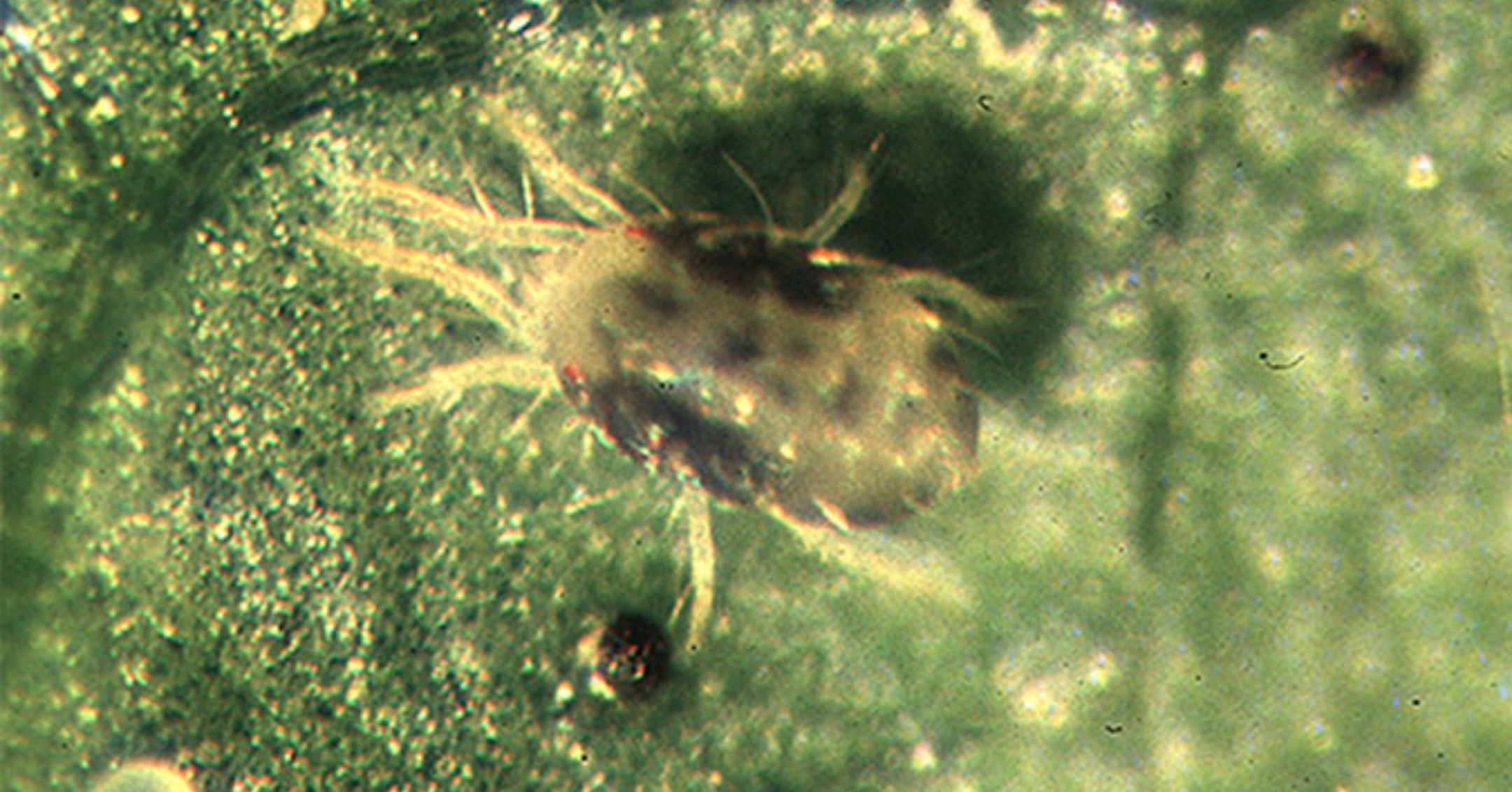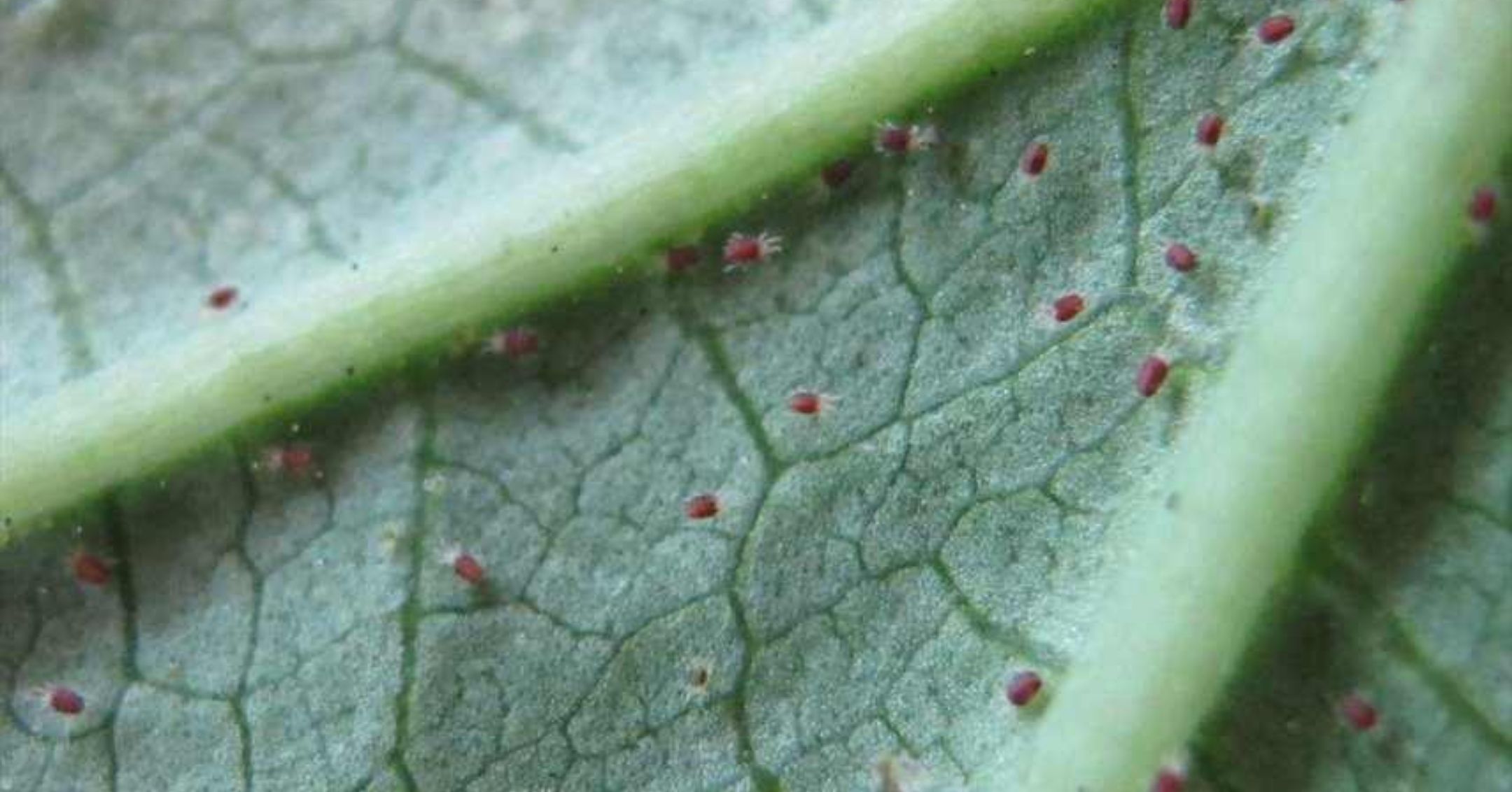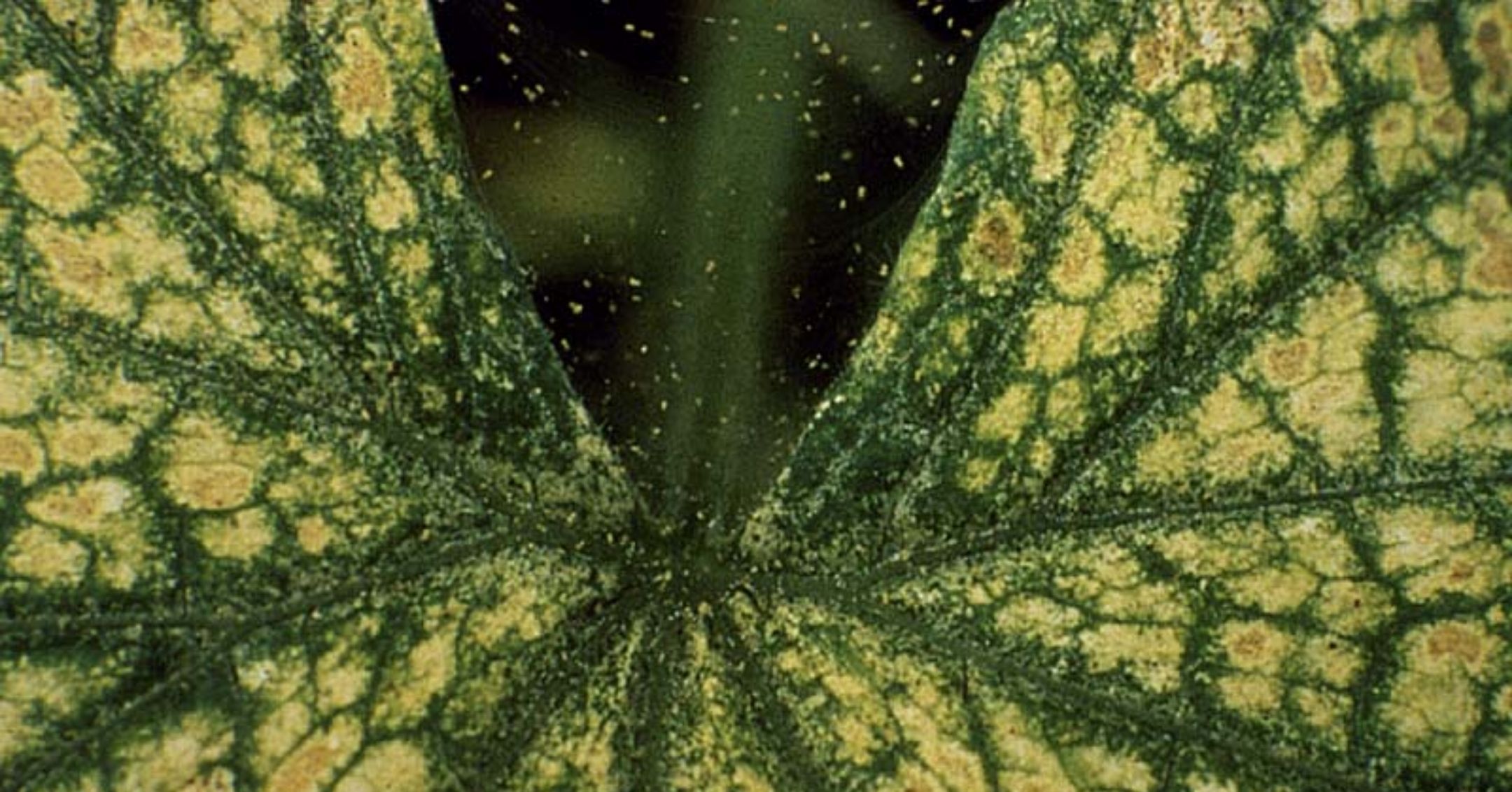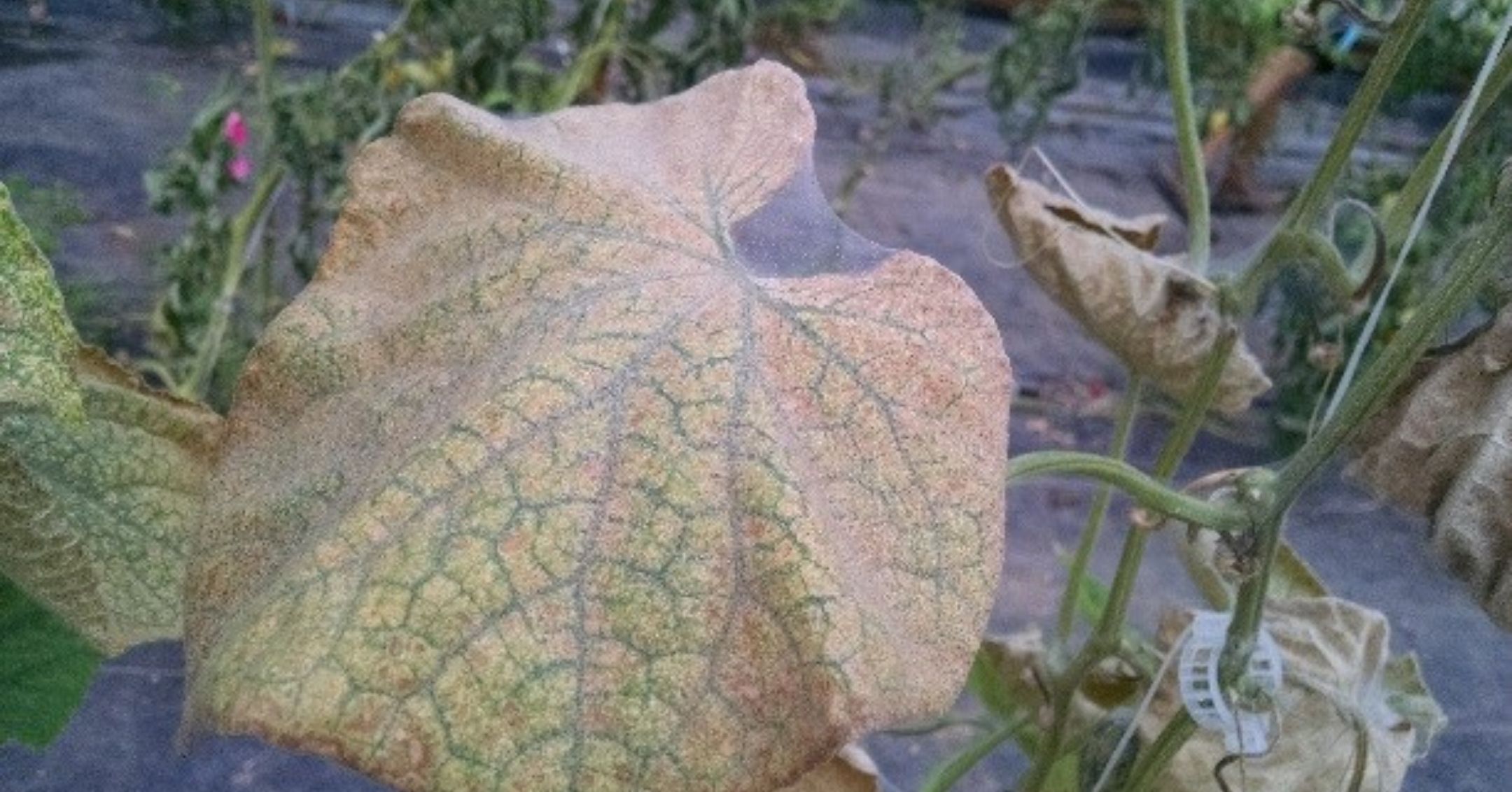Twospotted Spider Mite




Description
Adult: Females 0.017 inch (0.4 mm) long and oval; males slightly smaller with tapered hind end. Orange in color during winter and early spring, then turn yellow-green with two dark spots once feeding begins. Adults have red eyes, and as they mature, their bodies turn dark brown and the two dark spots become less distinct.
Egg: Round, 0.02 inch (0.5 mm) in diameter, and translucent to opaque.
Immature Stages: Initially round, translucent to pale green, with three pairs of legs when first hatched, then oval, dark green with black spots on back with four pairs of legs as it matures. Stages include larvae, protonymph, and deutonymph.
Life History
Adult females take on an orange color in the fall as their metabolism slows. They then spend the winter in protected sites on the ground, such as on crop debris and weeds. In the spring, mites crawl to nearby host plants to feed, and they are able to “parachute” on air currents attached to a strand of fine silk. Egglaying begins a few days after feeding starts. The overwintering females can lay 30 to 50 eggs in a 25- day average life span while the summer females can lay up to 100 to 150 eggs in a 4- to 6-week period. First generation eggs may take 3 weeks to hatch, depending on temperatures, while egg hatch in the summer may take only 1 to 2 days. A single generation may be completed in as few as 10 to 14 days during the hot summer periods. Eight or more generations occur each year.
Damage
Spider mite feeding causes fine stippling (small spots) on the upper surface of leaves; leaves can become bronzed and turn brown when injury is severe. Mites produce silk webbing on the undersides of leaves causing a grayish hue in their color. Damage may also cause wilting, deformed leaves, leaf drop, and leaf and stem death.
Management
Cultural
- Keep plants healthy and unstressed, especially by drought. Unhealthy or drought-stressed plants are more susceptible to mite populations and damage.
- Avoid using broad-spectrum insecticides and miticides which kill beneficial insects and predatory mites. Green lacewings, predatory mites, and ladybugs help control spider mite populations.
- Avoid applications of malathion and pyrethroid insecticides for squash and pumpkin insect pests, such as squash bug. These insecticides are known to stimulate mite feeding and reproduction (hormoligosis).
- Use a strong stream of water from a hose-end nozzle to physically wash mites off of infested plants. Direct a stiff spray of water to the undersides of leaves and the lower portions of plants.
- Use a slow-release nitrogen fertilizer when possible. High nitrogen levels in foliage encourage spider mite reproduction.

